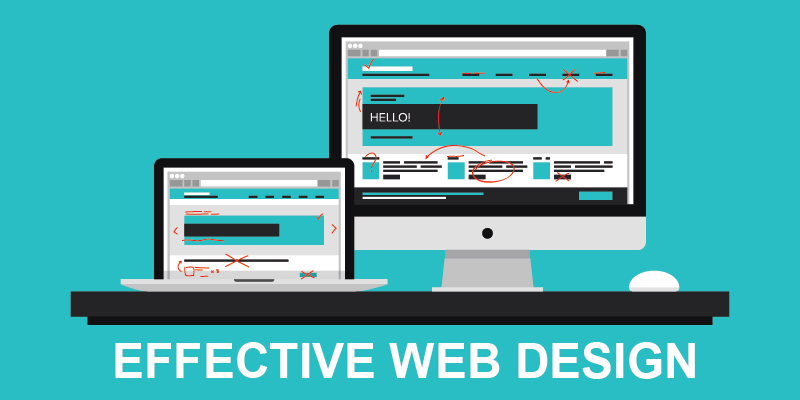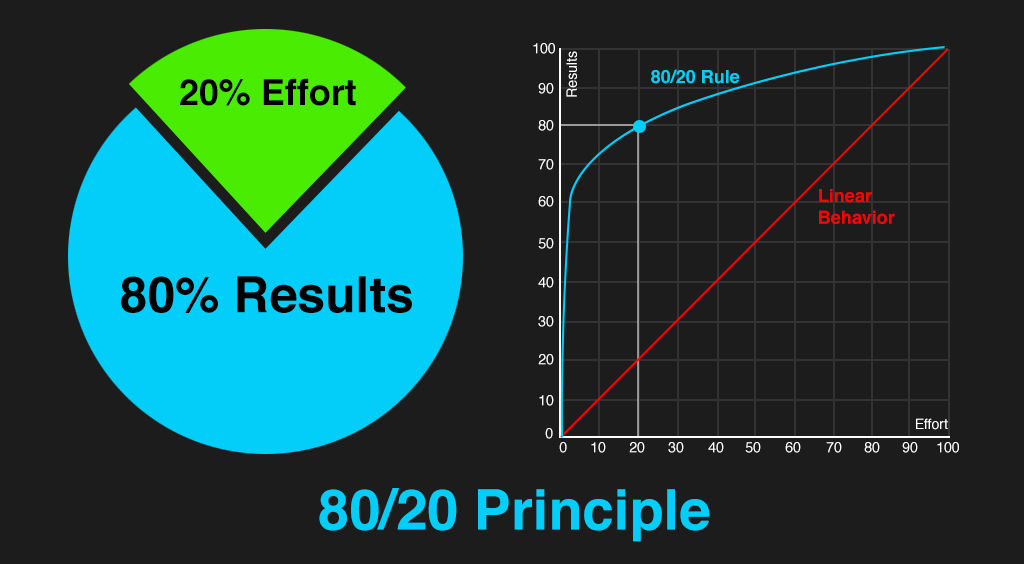While many may think that visual appeal and aesthetics are the most important factor in website design, what emerges to be a favorite is the utility and usability of the website. It is even more important for business websites, where intuitive navigation and comprehensive utility may increase profits and bring more success to an online business.

Here are some of the most important rules associated with the usability and effectiveness of the website, and which invariably also make it a success or failure.
1. Pareto Principle
 The Pareto Principle states that 20% of all the causes contribute towards 80 % of the effects. This 80/20 principle is applied to the businesses as well where 80% of the business comes through 20% of the clients. We can also extend this rule to the website and its usability. Clients and customers that bring in the maximum profits can be identified and their feedback, reviews, and usability analysis would help us to make changes that should be brought within the website features.
The Pareto Principle states that 20% of all the causes contribute towards 80 % of the effects. This 80/20 principle is applied to the businesses as well where 80% of the business comes through 20% of the clients. We can also extend this rule to the website and its usability. Clients and customers that bring in the maximum profits can be identified and their feedback, reviews, and usability analysis would help us to make changes that should be brought within the website features.2. Click Rule
Surveys show that if the user is not able to reach the desired webpage or information he/she is seeking within the first 3 clicks, he chooses some other website. Hence a logical structure, clear navigation, and “easy to follow” website structure and hierarchy are highly important for a website. The user should comfortably understand the website structure and how he/she can navigate around it.
3. Fitt’s Law
Fitt’s law, in a nutshell, states that the movement of humans to any given target area depends on the distance as well as the size of the target. This law can also be implemented on website navigation. Considering the movement of the mouse, the website content can be optimized so that the mouse click can reach to the desired website buttons and areas (which have also been optimized for size) by covering the least possible distance.
4. Design of the Interface
The website's interface design should also include certain heuristics principal so that the navigation is more easy and favorable for the web servers and customers. Some of the important factors to be considered in this area include:
●Consistency
●Presence of shortcuts for the more frequent visitor
●Informative comments and feedbacks
●Scope towards the easy reversal of errors
●Reducing the memory loads
●Greater control facility for the web surfers.
5. Content arrangement
 Users have restricted time at their hands and hence want to get the information they are seeking in the least possible of time. One way of serving this need is to provide a summary of the information at the start of the page itself. This style of content presentation is termed as the “Waterfall Effect” or the “Inverted Pyramid Arrangement”. The key points, minor details as well as the conclusion can be provided at the start of the page itself so that the web visitors can be instantly gratified and would start liking the website more.
Users have restricted time at their hands and hence want to get the information they are seeking in the least possible of time. One way of serving this need is to provide a summary of the information at the start of the page itself. This style of content presentation is termed as the “Waterfall Effect” or the “Inverted Pyramid Arrangement”. The key points, minor details as well as the conclusion can be provided at the start of the page itself so that the web visitors can be instantly gratified and would start liking the website more.
These are only some of the ways that you can use for making your web design customer-friendly and useful. You can also bring in more innovative ideas and make your website as well as an online business more popular among the masses.
Comments
Post a Comment